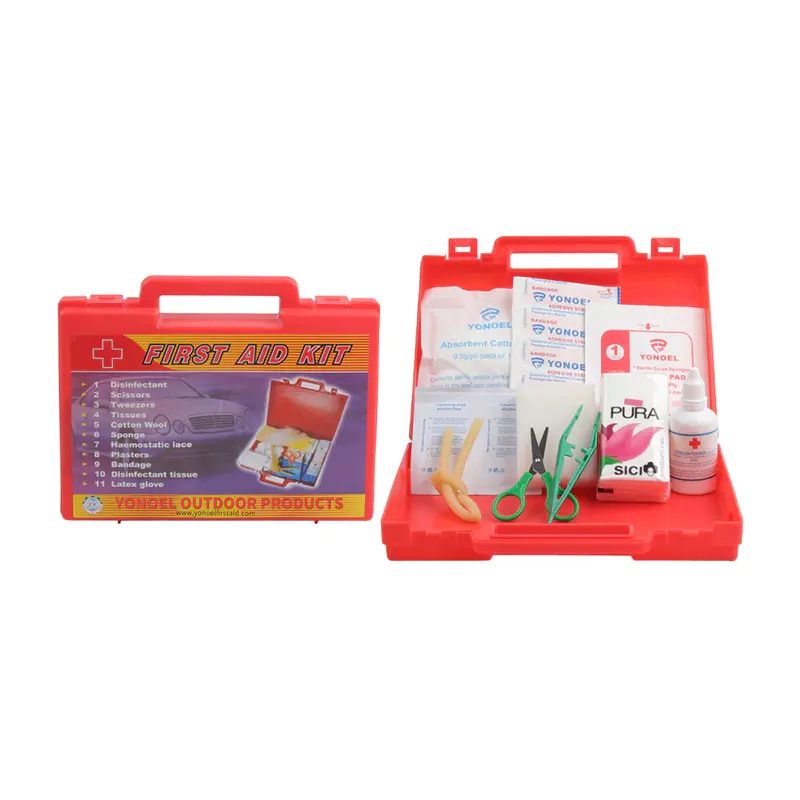Ensuring safety on the road is a fundamental concern for every driver. Emergencies can occur without warning, whether it is a minor accident, sudden health issue, or challenging weather condition. A Roadside Car First Aid Kit is more than a convenient accessory—it is an essential tool that enhances preparedness, allowing drivers and passengers to respond effectively in critical situations. By providing immediate access to essential medical supplies, these kits can reduce injury severity and improve outcomes, making them a crucial part of vehicle safety.

Every driver faces unpredictable scenarios on the road, from minor scrapes to serious injuries. Possessing a Roadside Car First Aid Kit ensures that immediate care is possible, bridging the gap until professional medical help arrives. For instance, a driver who suffers a small laceration during a trip can clean, disinfect, and bandage the wound on the spot, preventing infection and discomfort. In contrast, without a kit, even minor injuries could escalate, causing unnecessary pain and stress.
Moreover, first aid kits foster a culture of safety among passengers. Families with children, outdoor enthusiasts, and professional drivers benefit significantly from having these kits readily available. Being prepared for emergencies instills confidence, allowing drivers to focus on safe navigation, while ensuring that unexpected situations are managed efficiently and responsibly.
A well-stocked Roadside Car First Aid Kit typically contains adhesive bandages, antiseptic wipes, gloves, burn dressings, scissors, tweezers, and emergency blankets. These supplies address a wide range of medical issues encountered on the road. For example, adhesive bandages and antiseptic wipes help quickly treat cuts, while burn dressings are essential for accidents involving hot surfaces. Gloves provide hygiene protection, preventing contamination while administering care.
Unlike makeshift kits, professionally designed kits ensure that items are organized and easily accessible. Some kits include tools for CPR or trauma care, highlighting their versatility. By considering potential road hazards, these kits offer a balance between basic care and preparedness for more serious injuries, making them indispensable for both urban commuting and long-distance travel.
A truly effective kit contains supplies that address a variety of situations. Essential items include:
Adhesive Bandages – Protect minor cuts from contamination.
Antiseptic Wipes – Clean wounds to reduce infection risk.
Medical Gloves – Maintain hygiene and prevent cross-contamination.
Scissors and Tweezers – Useful for removing debris or cutting dressings.
Burn Dressings – Provide immediate relief and protection for burns.
Emergency Blanket – Maintains warmth for shock or cold exposure.
Trauma Supplies – Larger bandages and compresses for serious injuries.
Each item serves a critical role, ensuring preparedness for minor scrapes to more serious accidents.
Roadside Car First Aid Kits come in portable and full-sized formats, each catering to different needs. Portable kits are compact, lightweight, and perfect for everyday drivers. They fit easily under a seat or in a glove compartment while providing essential medical supplies. Full-sized kits, however, are better suited for long journeys, outdoor adventures, or vehicles with multiple passengers. These kits contain additional supplies such as trauma bandages, splints, and advanced wound care items.
Choosing between the two depends on travel frequency, vehicle type, and potential risks. A city commuter may prioritize compactness, while a family embarking on road trips might value the comprehensive coverage of a full-sized kit. By comparing options, drivers can select a kit that aligns with their unique safety requirements.
Selecting between portable and full-sized kits depends on your vehicle type and travel habits.
Portable Kits – Compact, lightweight, ideal for daily commutes or small cars. Can be stored under seats or in glove compartments.
Full-Sized Kits – Larger, comprehensive, suitable for families, long trips, or off-road adventures. Offers more supplies and organized compartments for complex emergencies.
| Feature/Item | Portable Kit | Full-Sized Kit |
|---|---|---|
| Adhesive Bandages | Yes | Yes |
| Antiseptic Wipes | Yes | Yes |
| Medical Gloves | Yes | Yes |
| Scissors/Tweezers | Yes | Yes |
| Burn Dressings | Limited | Multiple |
| Emergency Blanket | Small | Full-size |
| Trauma Supplies | Basic | Extensive |
| Storage Compartments | Single | Multiple |
Organization within a first aid kit is critical for effective response. Kits that separate items into labeled compartments allow users to locate what they need immediately. For example, one section may contain wound care supplies, while another stores trauma tools. This eliminates confusion during emergencies and ensures rapid intervention.
Visual cues and intuitive arrangement also improve usability. Drivers who are familiar with the layout of their kit can respond quickly under pressure. In contrast, poorly organized kits can slow response time, causing unnecessary stress and potentially worsening outcomes. Thoughtful organization maximizes efficiency, allowing drivers to act decisively and confidently.
Maintaining a Roadside Car First Aid Kit is as important as owning one. Medical supplies, including bandages, antiseptics, and tapes, have limited shelf lives. Regularly checking and replacing expired or used items ensures readiness for any situation. Cleanliness and proper storage conditions also extend the durability of the kit, keeping materials effective when needed.
Routine inspection mirrors broader vehicle safety practices such as checking brakes, tires, and fluids. By integrating first aid kit maintenance into regular vehicle checks, drivers adopt a comprehensive approach to safety, ensuring preparedness for unexpected events and reinforcing responsible driving habits.